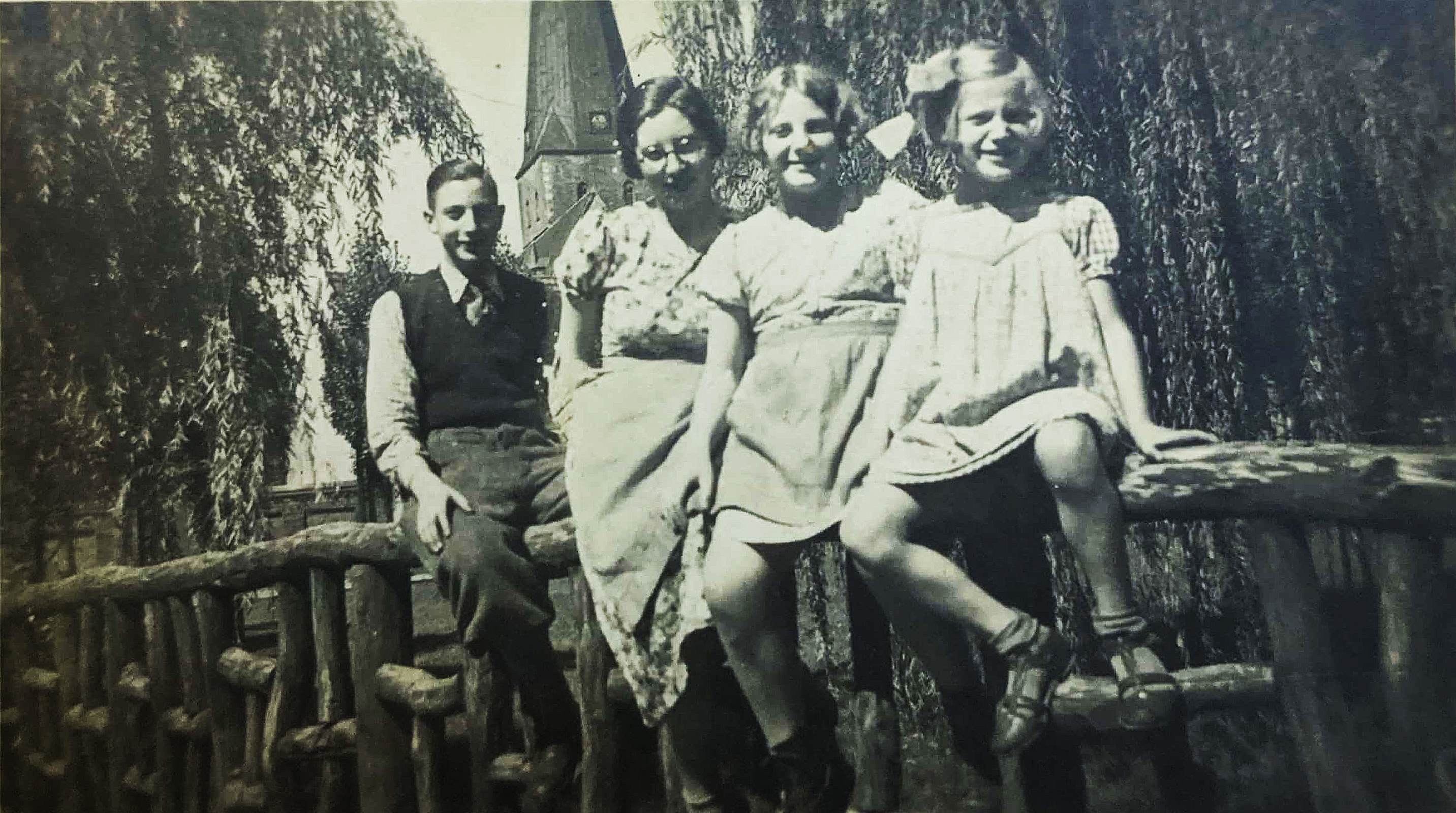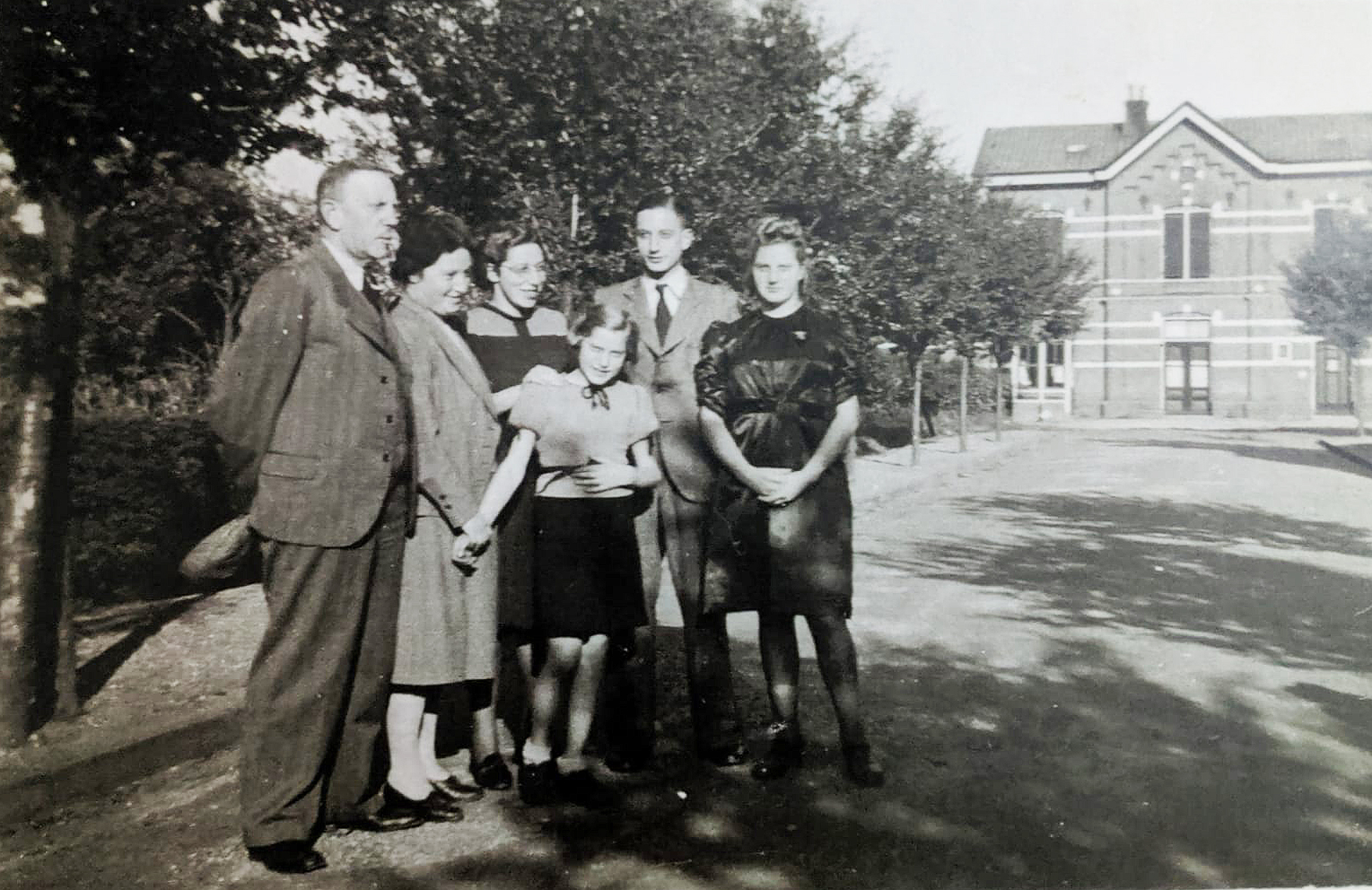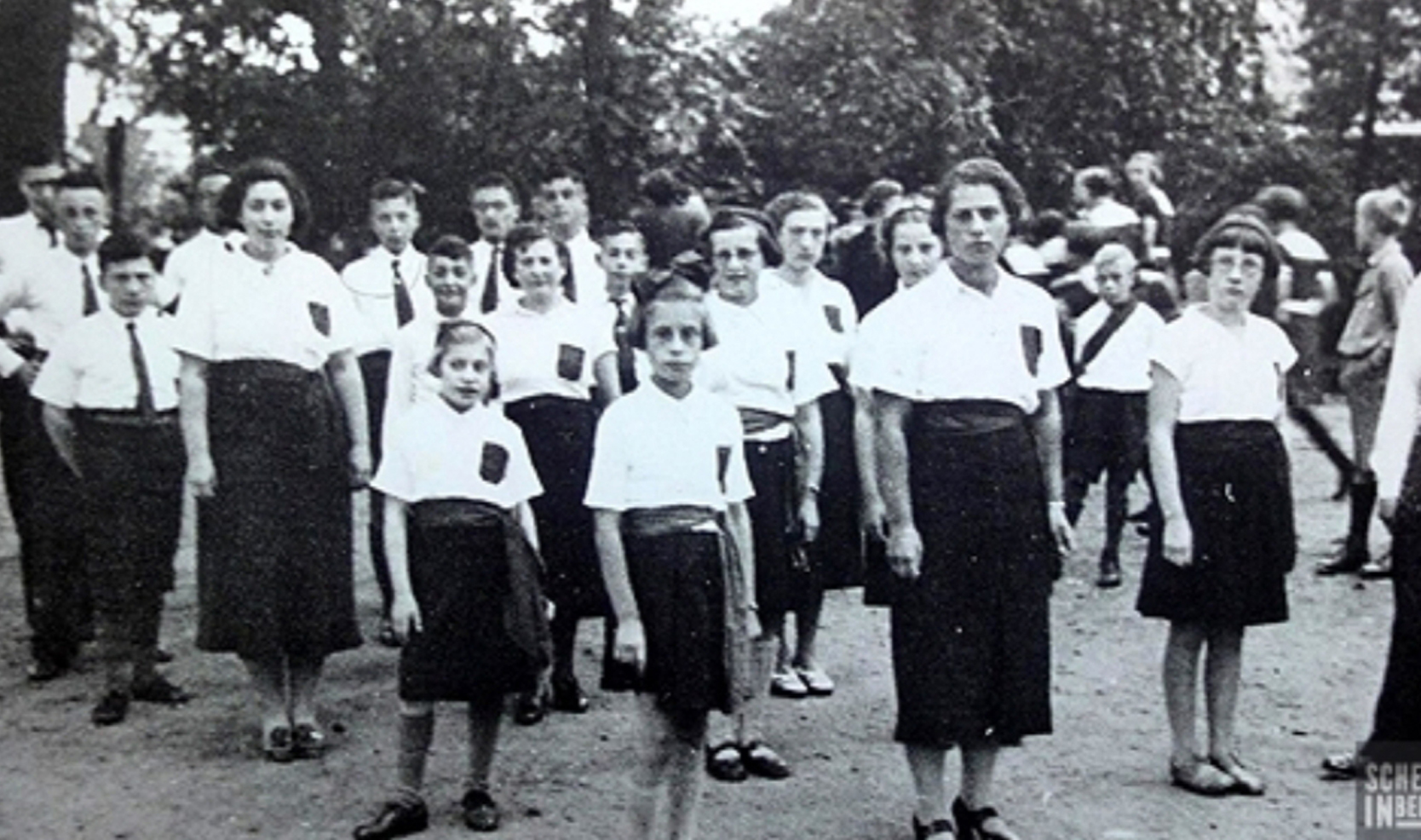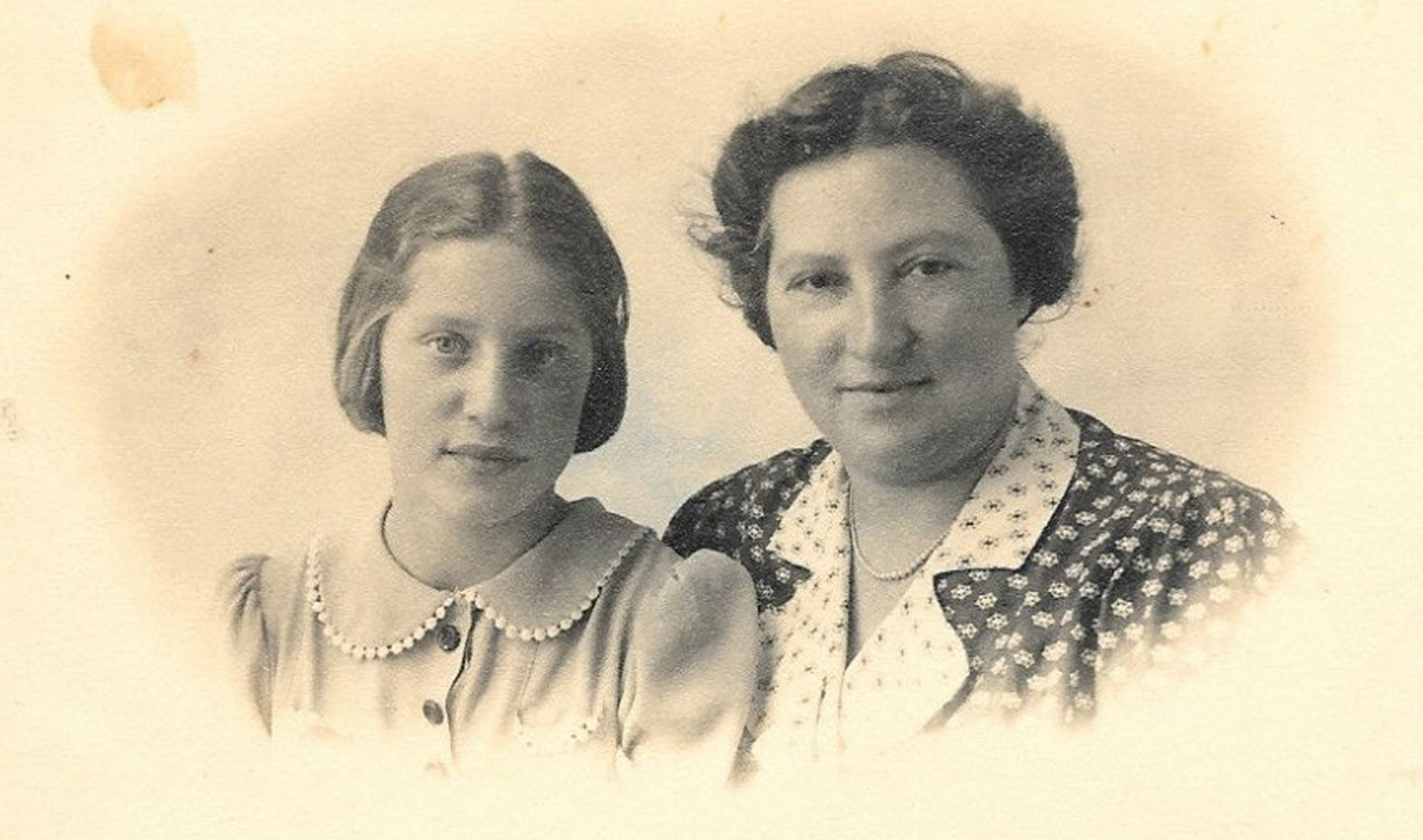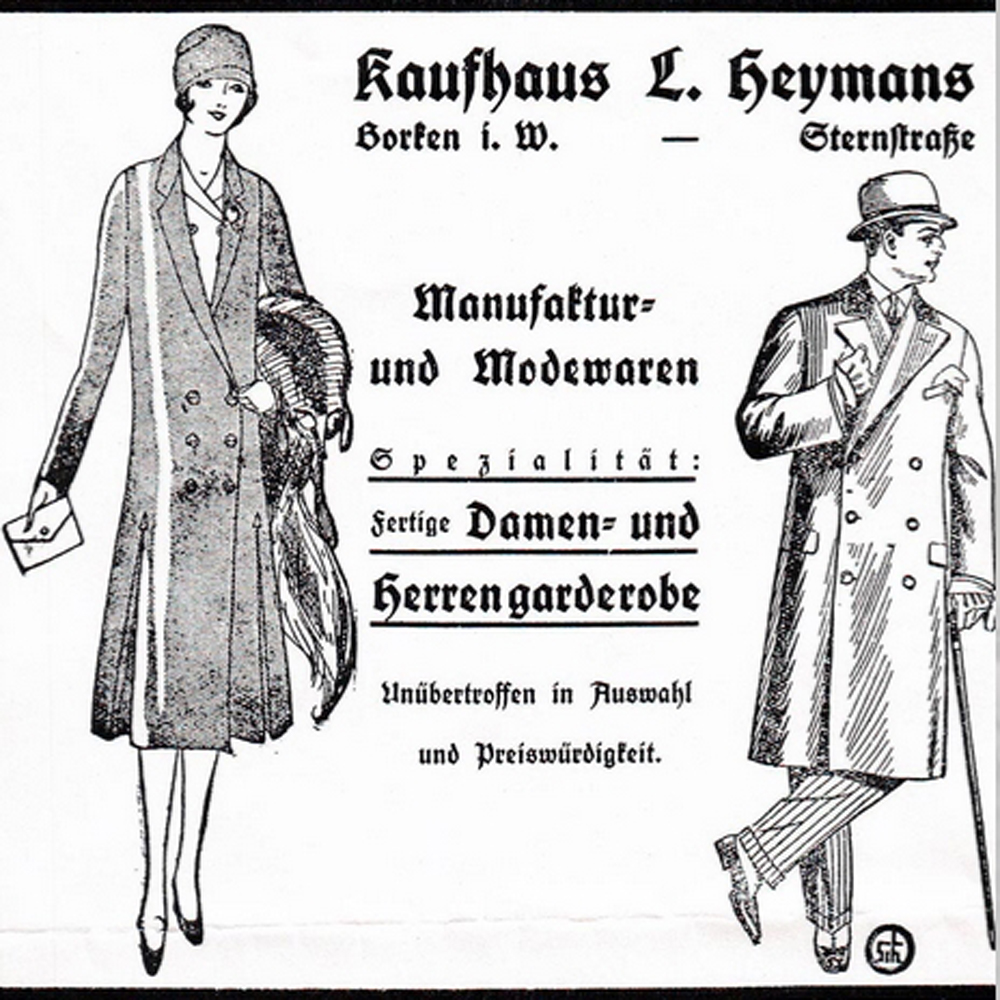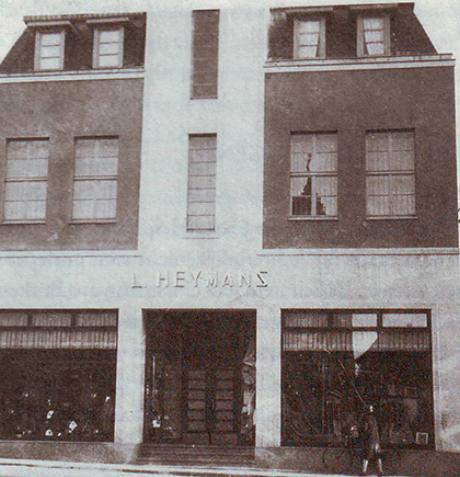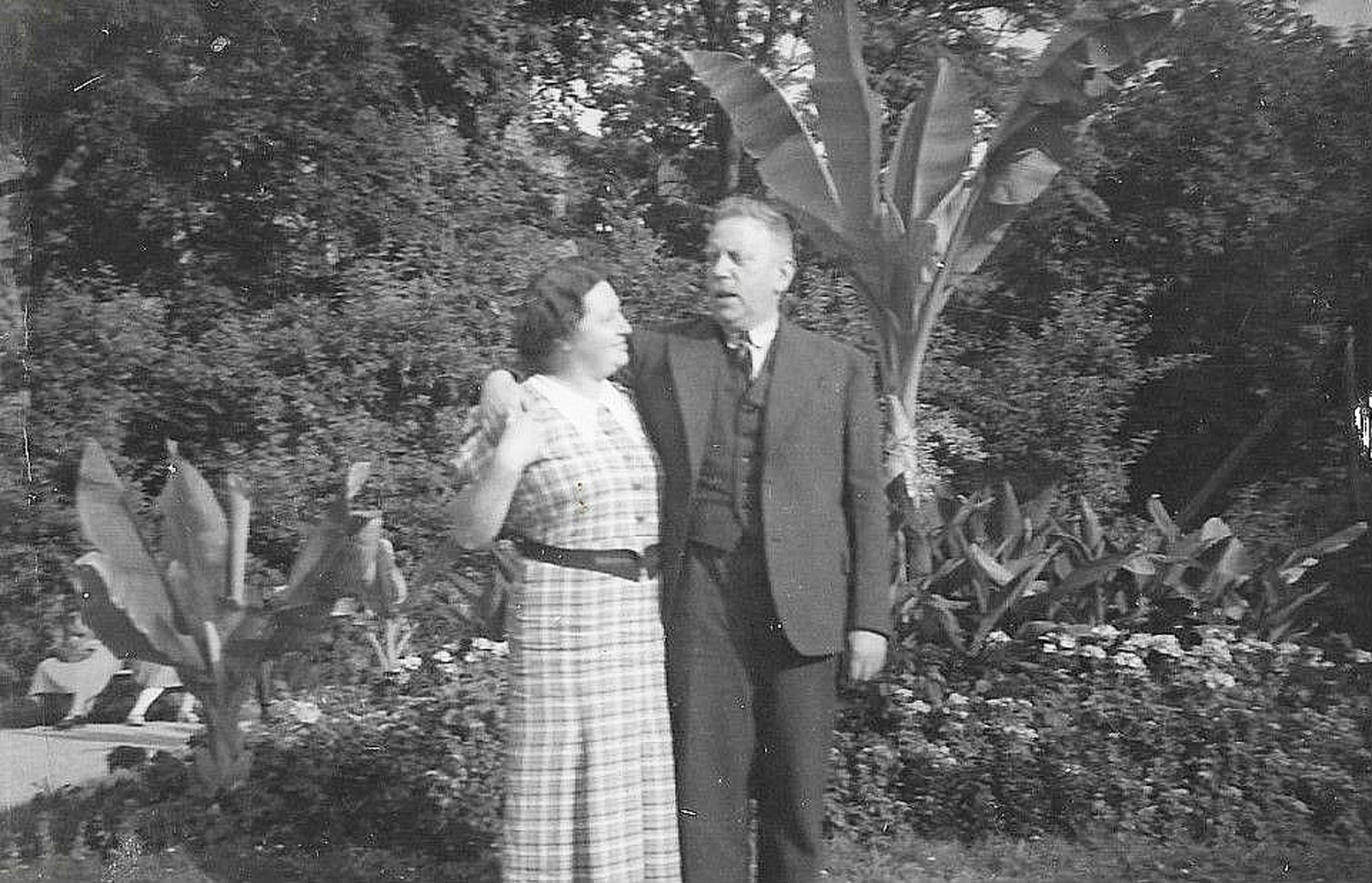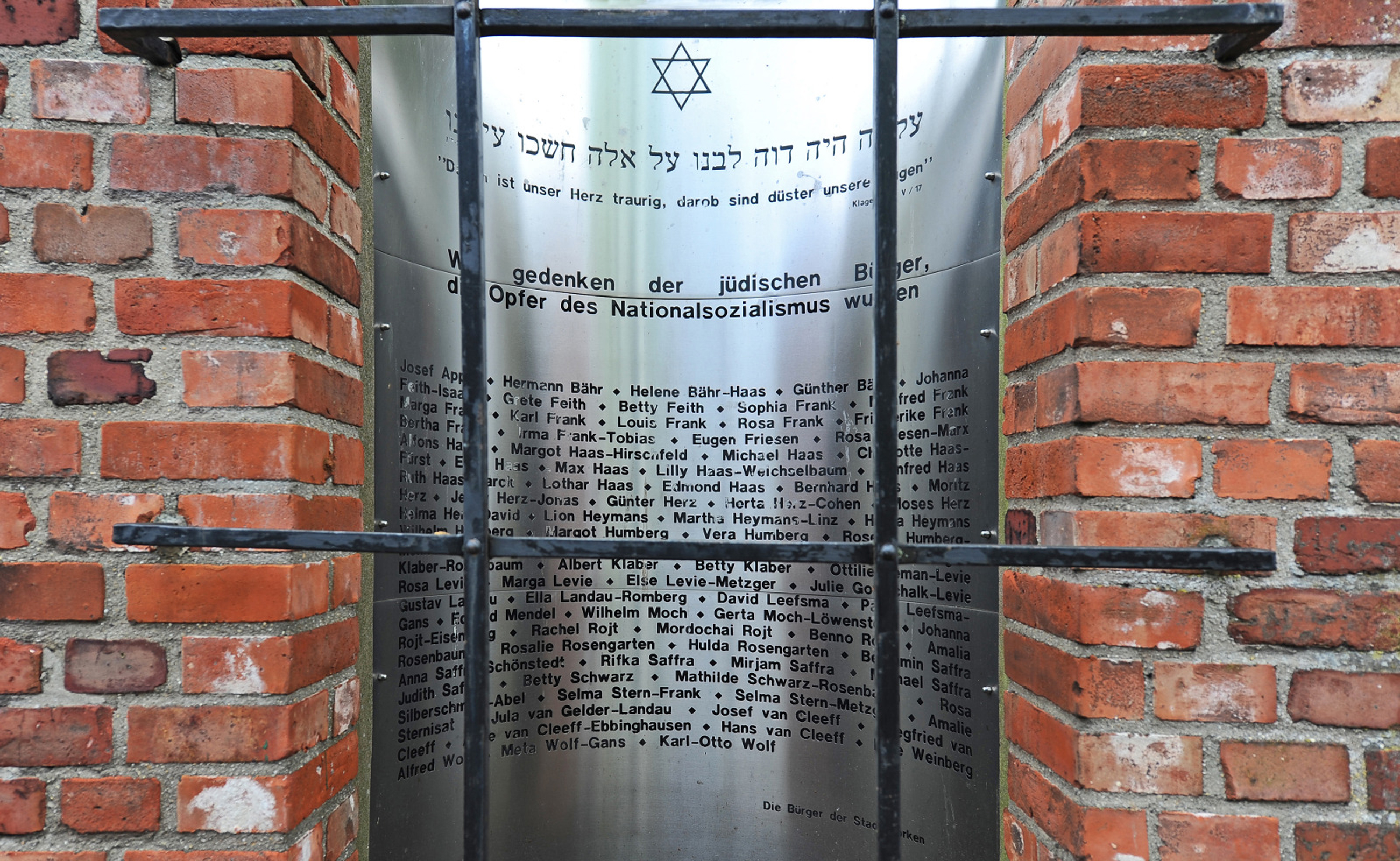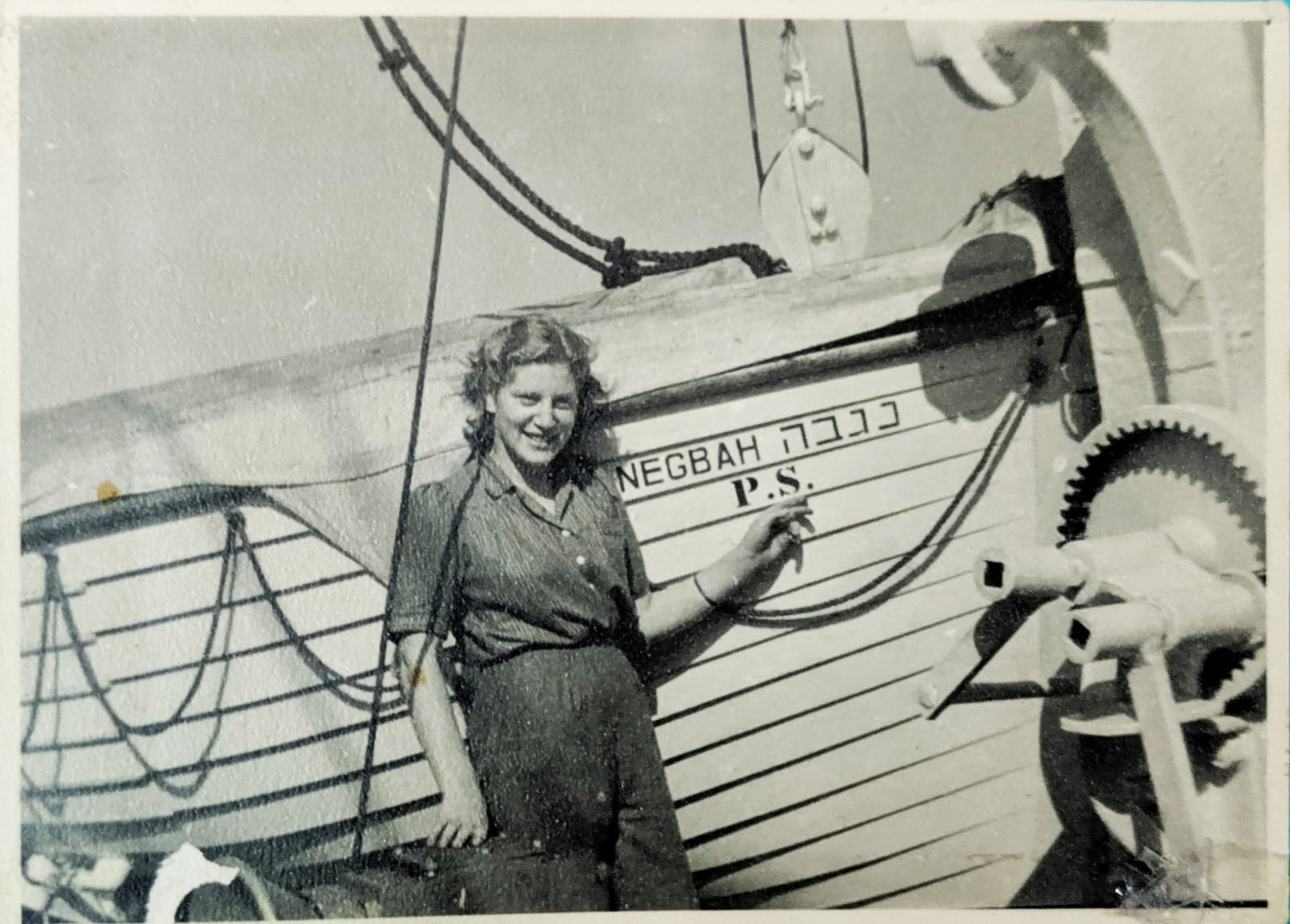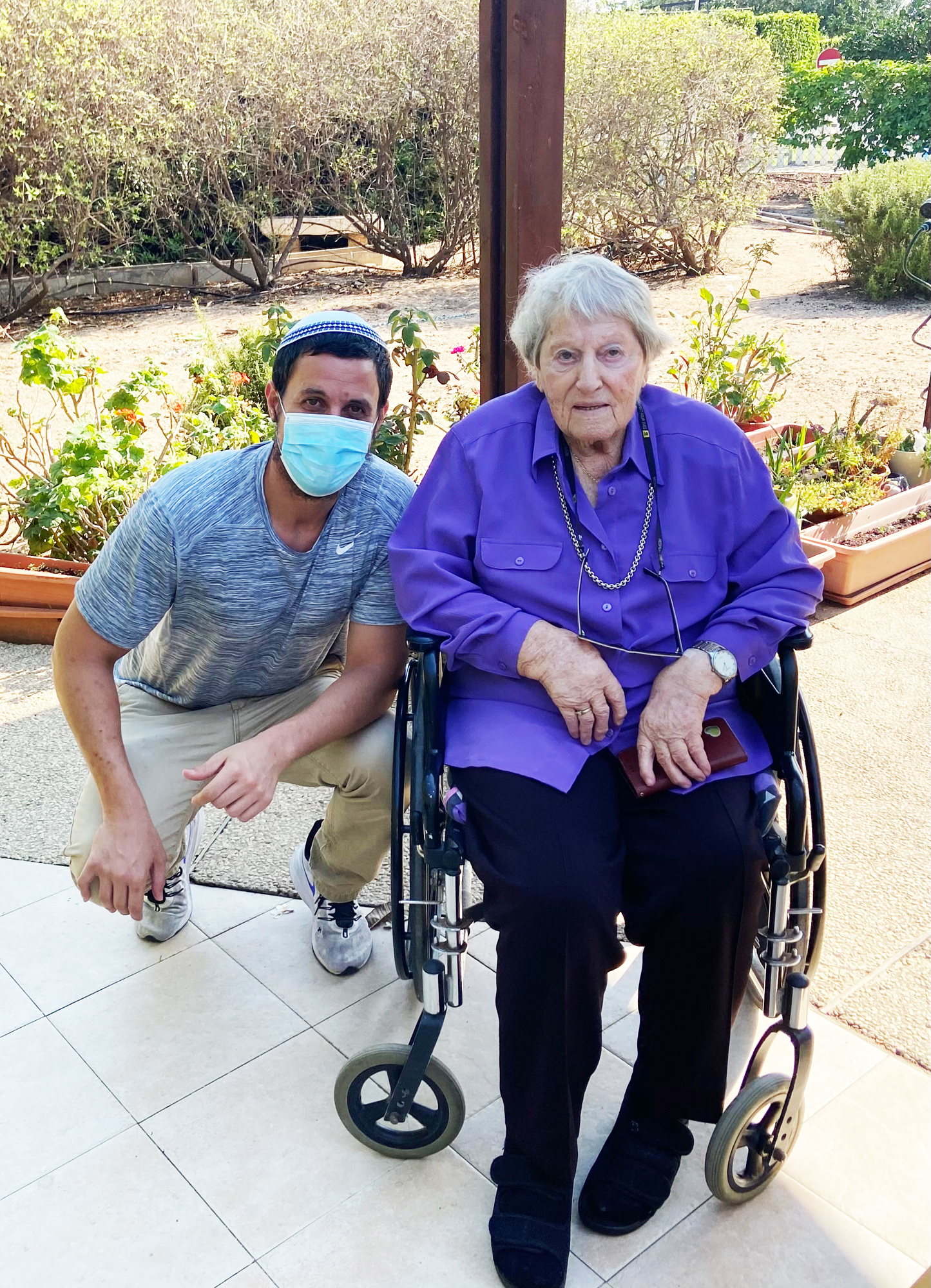Vardit Meir was born Rosel Heymans in the town of Borken, Germany in 1929, the youngest of the four children of Leon and Martha Heymans. The family was religious.
"We kept Shabbat", says Vardit, "and went to the synagogue. We all loved and looked forward to the holiday seasons: the holiday seasons were a great experience for us. My personal favorite holiday was Hanukkah. Mother would prepare a special table and spread a big red tablecloth that covered the table and reached the floor. Mother placed the menorah on the table and next to it she placed a personal candy plate for each of us. She hid gifts for everyone under the table covered by the red tablecloth. Every year, I could hardly wait to receive my Hanukkah gift. To this day, I've continued my mother's tradition with my grandchildren and great-grandchildren, and thank God I have 19 great-grandchildren! Every Hanukkah, they come to me and I prepare a table like that for them with a personal candy plate, just like my mother made for us".
The Heymans family had a large textile shop in Borken. One of Vardit's most memorable childhood experiences was running to the textile shop at the end of the school day to “help” the family in the shop. “I also pretty much helped myself. I loved that place!” she says.
Leon Heymans, who came from the Netherlands, took the train to Groenlo, where his relatives lived, in October 1938. At the border, two of his children's savings books were taken from him. The customs officials allowed him to continue his journey, but the next day the daily newspaper in Borken reported that Leon Heymans had fled with two thousand guilders. His wife called him and asked him to stay in the Netherlands until the matter was settled. A few days later, on the pogrom night of November 9, 1938, Nazis broke into the family's textile store in Borken and caused great damage. Martha Heymans then decided to travel with the children to the Netherlands as well and wait for further developments there.
Leon Heymans participated in the textile business that his brother Harrie ran in Groenlo.
With the beginning of the war, the family's situation in the Netherlands also became increasingly precarious. On October 8, 1941, Leon and four other Jewish men were arrested in a raid during Sukkot and deported to the Mauthausen concentration camp. Two weeks later, his family received the news that he had died of heart failure.
Even in the Netherlands, trouble continued to haunt the family. Leon Heymans was apprehended by the Nazis and executed ten days later. Shortly afterwards, Vardit's mother and older sister were sent to the Auschwitz extermination camp where they were murdered. Only three of the Heymans children remained. Vardit, the youngest of the family, was only 14 years old in 1943 when, for the first time in her life, she had to fend for herself.
For two years, from April 1943 to April 1945, Vardit moved around, hiding in about 14 different places. The place she remembers most is the Dutch town of Zeist. There, she met "Tante (Aunt) Mien" and Mien's husband Chris.
Tante Mien adopted Vardit and tried to provide for the girl's every need. She also changed the name Rosel – Vardit's birth name – to "Corrie" so that no one would think that this blonde Dutch girl was actually a Jewish girl seeking refuge from the Nazis.
But even then, to Vardit's great sorrow, the hiding place in Zeist did not last long. Neighbors informed on kind Tante Mien, Vardit was forced to continue to flee and hide elsewhere during the war.
At the end of the war, Vardit reunited with her surviving brother and sister and, in 1948, she immigrated to Eretz Israel aboard the illegal immigrant ship "Negba". She settled in Kibbutz Ein Hanatziv where she met her future husband, Zvi Meir. Nine years after they were married, the family moved to Moshav Shavei Zion.
Vardit has always remembered the kindness and generosity shown to her by Tante Mien and Chris. She looked for a way to close the circle and to show them something of the goodness they had shown her. Indeed, fate made this possible and Vardit was able to locate Tante Mien and even host her for some six weeks at her home in the moshav. "I was so excited that she came! I made sure she would feel as if she were in a five-star hotel. For every day she hid me, I hosted her and gave her the best I could give in return. In addition, I did my best to have my aunt recognized by Yad Vashem as a "Righteous Among the Nations" in order for her to receive the respect she deserves, and that is what happened in the end."
Vardit lived in Moshav Shavei Zion, enjoyed the large family she had established, and found joy in the simple things of life.
She passed away on January 12, 2022 in Shavei Zion at the age of 92. We are glad that we were still able to learn her life story from her.
